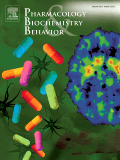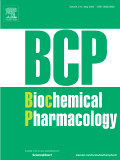
“Type 1 cannabinoid receptors (CB1Rs) are widely expressed in the vertebrate retina but the role of endocannabinoids in vision is not fully understood. Here we identified a novel mechanism underlying a CB1R-mediated increase in retinal ganglion cell (RGC) intrinsic excitability acting through AMPK-dependent inhibition of NKCC1 activity.
Clomeleon imaging and patch clamp recordings revealed that inhibition of NKCC1 downstream of CB1R activation reduces intracellular Cl– levels in RGCs, hyperpolarizing the resting membrane potential. We confirmed that such hyperpolarization enhances RGC action potential firing in response to subsequent depolarization, consistent with the increased intrinsic excitability of RGCs observed with CB1R activation.
Using a dot avoidance assay in freely swimming Xenopus tadpoles we demonstrate that CB1R activation markedly improves visual contrast sensitivity under low light conditions.
These results highlight a role for endocannabinoids in vision, and present a novel mechanism for cannabinoid modulation of neuronal activity through Cl– regulation.”








